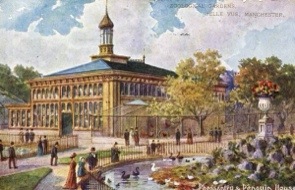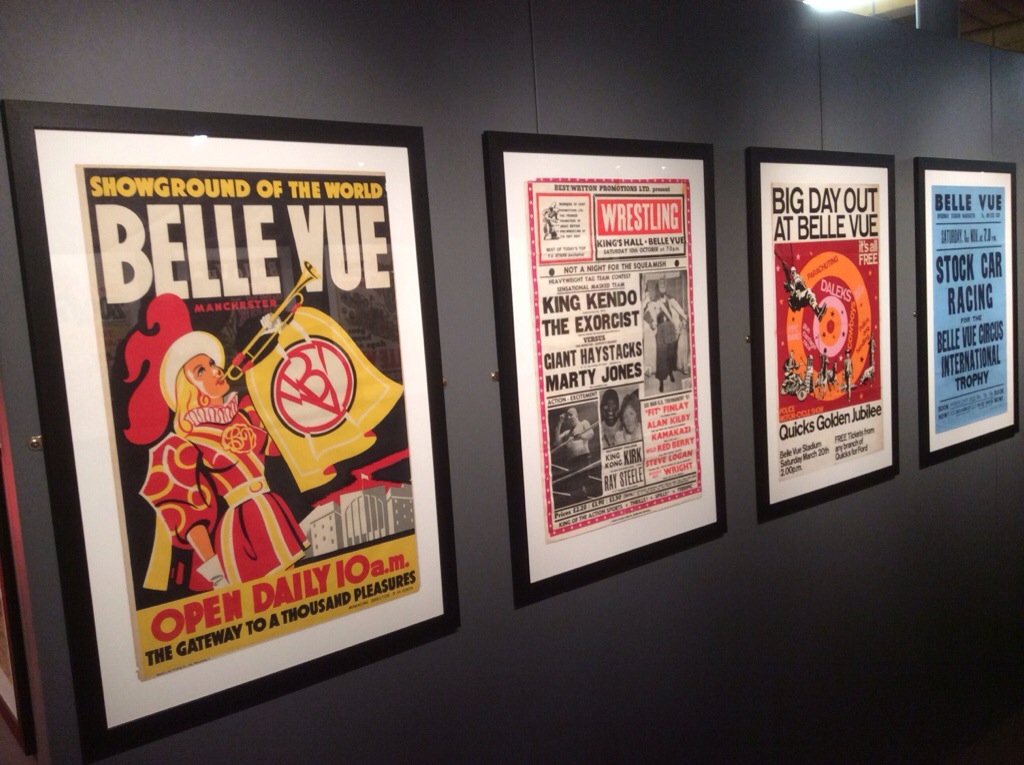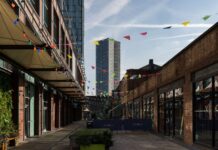Its very mention will bring a misty eye to the older Mancunian, the place where they saw their first elephant or where they fainted seeing the Rolling Stones in the flesh.
Now a new free exhibition collecting the memories of the entertainment capital Belle Vue taking place at Dale Street in Manchester’s Northern Quarter aims to reinvigorate those precious moments.
Belle Vue was the dream of Nottingham-shire born John Jennison who had opened a small tearooms in Stockport in the 1830’s. He had bought land in what was then the small parish of Gorton in 1836, opening his gardens where visitors from all classes could enjoy a variety of leisure facilities including restaurants, or watch fire work displays in the formal landscaped gardens, building it over twenty five years into a highly profitable business.It’s fame in those early days was based on it being the first zoological gardens opened to the public in the North of England, rides on the jungle express of two elephants being most popular for the children.But Jennison had also hit upon the rise of the popular local wakes holidays and the gardens were soon attracting excursions which would increase with the opening of a nearby railway station.

Jennison died in 1869 but the management of the gardens passed to his sons and would remain with the family until the 1920’s when it would be greatly expanded becoming the entertainment capital of the North, a grand amusement park, a venue for the circus and eventually the venue of the world’s oldest greyhound track.
The 1930’s saw the appointment of William and Gerald Iles.The former, brother of the Managing Director was not a great success but his son Gerald as zoo keeper and publicist would raise the profile of the zoo.He would carry over a thousand animals by taxi to the BBC studios in Manchester during his career.
The middle of the twentieth century would see the gardens remembered more for their entertainment.The Gorton Philharmonic Orchestra had first appeared in 1887 and by the 1950’s were playing regular Sunday morning concerts.The first ballroom had appeared in the 1850’s.Count Basie’s orchestra would play in 1957 and the new Elizabethan ballroom opened in 1959 and inaugurated by Gracie Fields could hold more than four thousand people.There were brass band competitions with groups coming from all around the country to compete and fireworks, the most notable the 1954 reconstruction of the storming of Quebec with a cast of two hundred and fifty extras.

From 191o the King’s Hall would play host to some of the most famous names in entertainment.It was associated with Sir John Barbirolli’s Halle for three decades and in the pop era, its seven thousand seats would see the likes of the Rolling Stone’s, Jerry Lee Lewis and Led Zeppelin all play there.
The first fairground had opened in the 1870’s. By the turn of the 1900’s it was have an Ocean Wave, Helter Skelter and figure of eight Toboggan ride and by the 1930’s would be a worthy competitor to Blackpool’s pleasure beach and the annual circus would begin in the 1930’s, its Christmas carnival a mainstay of Manchester’s seasonal activities.
Its decline came quickly.Visitor numbers began to drop in the 1960’s.The zoo, a victim of changes in culture, closed in 1977, the landmark Bob’s of the amusement park had been demolished in 1971 and the King’s Hall held its last circus in 1981, closing the following year.The site was demolished in 1987.
Belle Vue Showground of the World runs from 21st to 30th March at 33 Dale Street Manchester as part of the Manchester Histories Festival from 11-6pm
More information HERE







